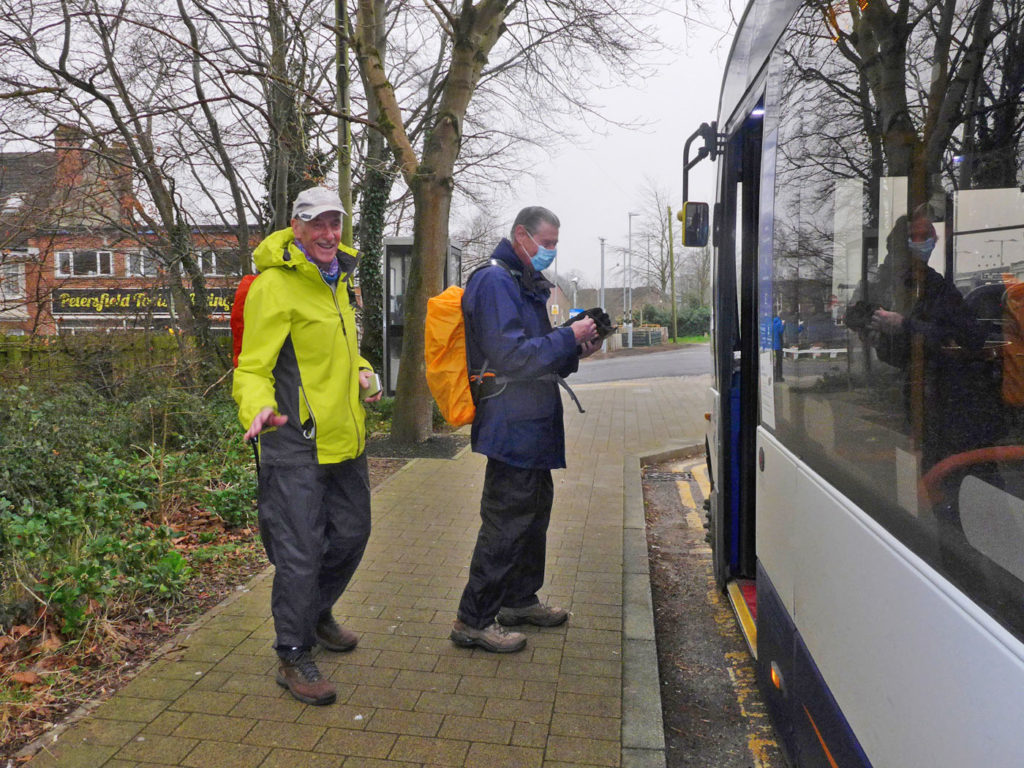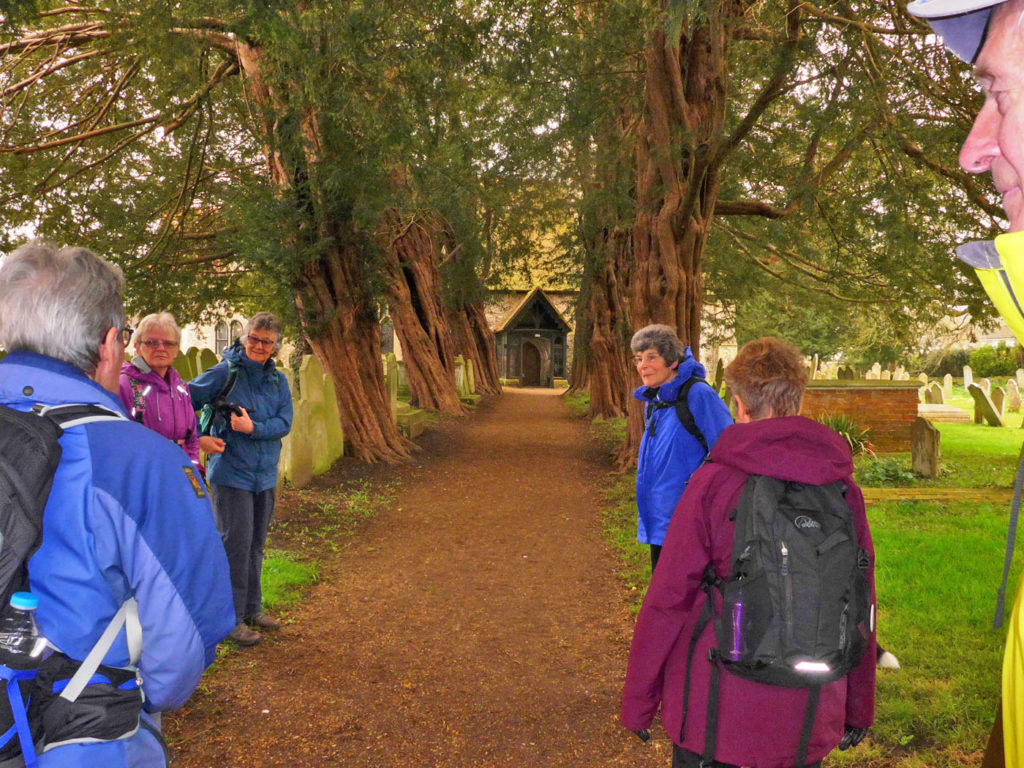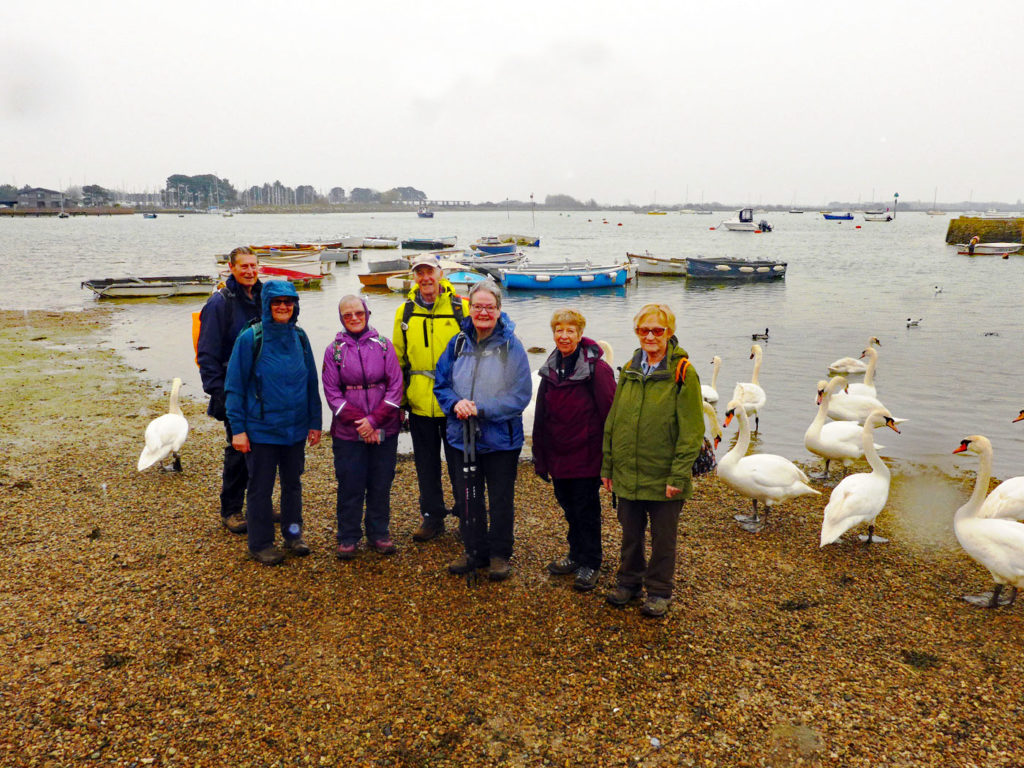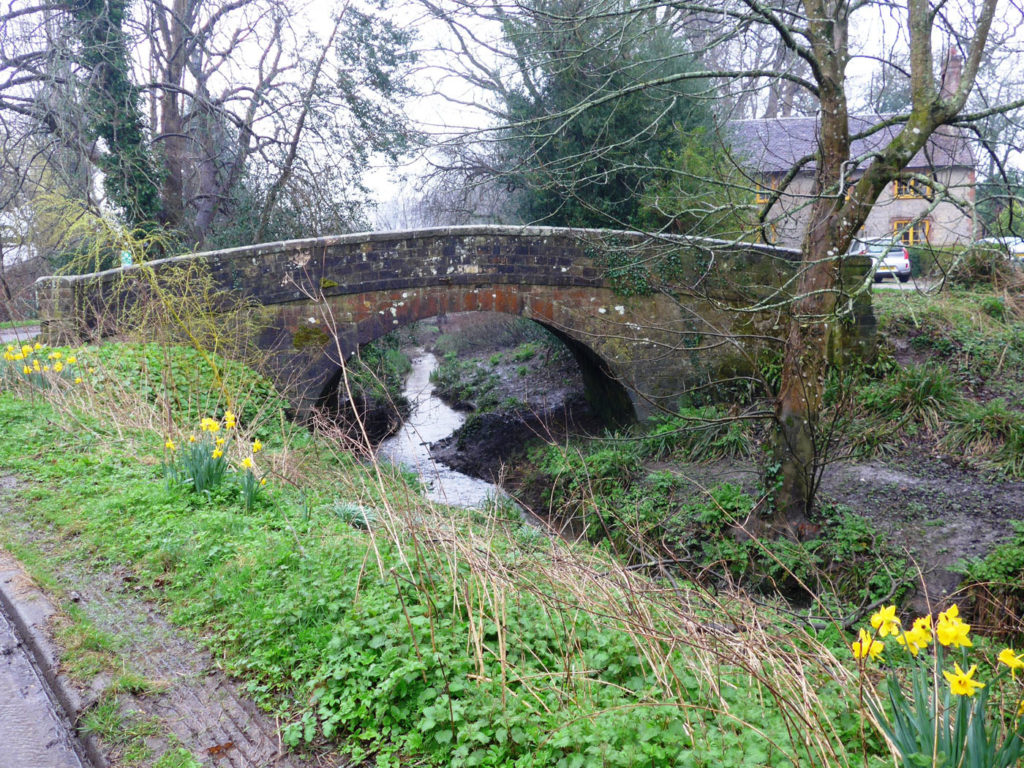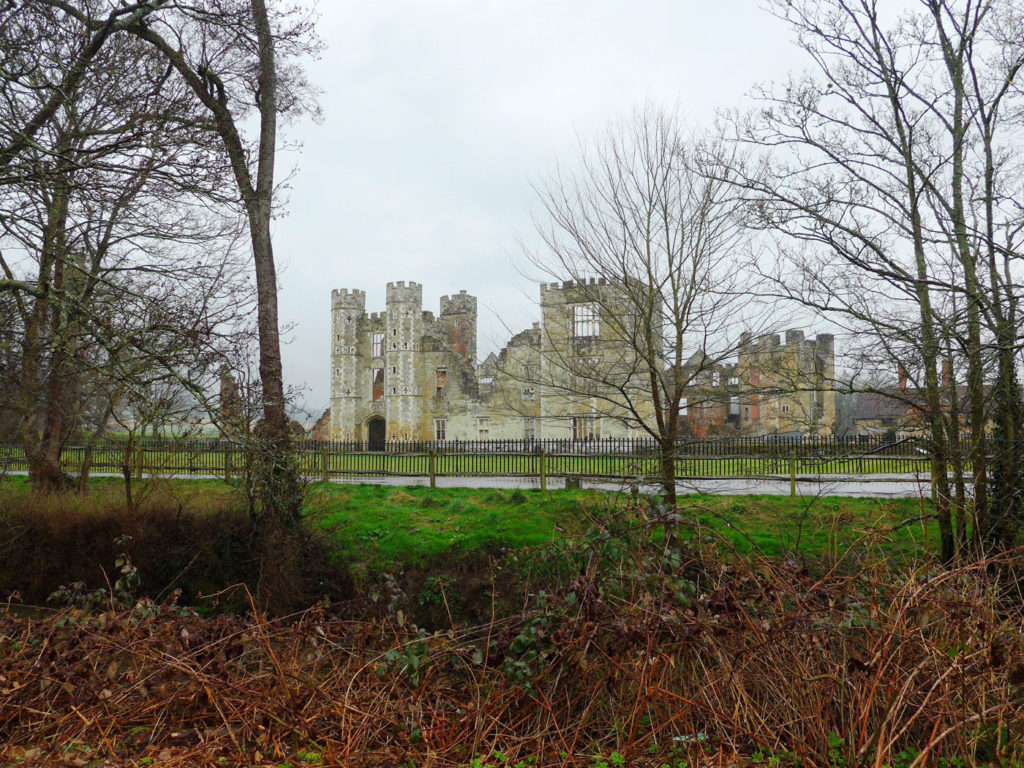4 Bus Journeys and 3 Interesting Walks
- Walk Leader: Gordon Churchill
- Distance: Approximately 6 Miles in total
- Start: Petersfield Railway Station: 09:30 bus departure, 16 March 2022
Following a beautiful sunny Tuesday, the forecast that evening was for heavy rain showers over the South of England. However, Wednesday dawned dry albeit with a very overcast sky. Eight hardy ramblers boarded the Chichester bus in Petersfield, and sat back and admired the beauty of the South Downs National Park as we were driven by way of Rogate, South Harting, Compton and Walderton. There is no doubt we do live in the midst of beautiful countryside, and also of course, so close to the South coast.
Reaching Westbourne, we alighted from the bus and met with another of our members. We learned the village was mentioned in the Domesday Book and has 66 listed buildings. The Medieval Church of St John was “modernised” in Victorian times, the box pews destroyed and walls moved. We photographed the yew trees leading to the main door and although there are countless ancient yew trees, these are said to be the oldest avenue of yews in England. In 1785 James Biden and Anne Silverlock, both Westbourne parishioners, were married here. They are the four times great grandparents of the US President Biden.
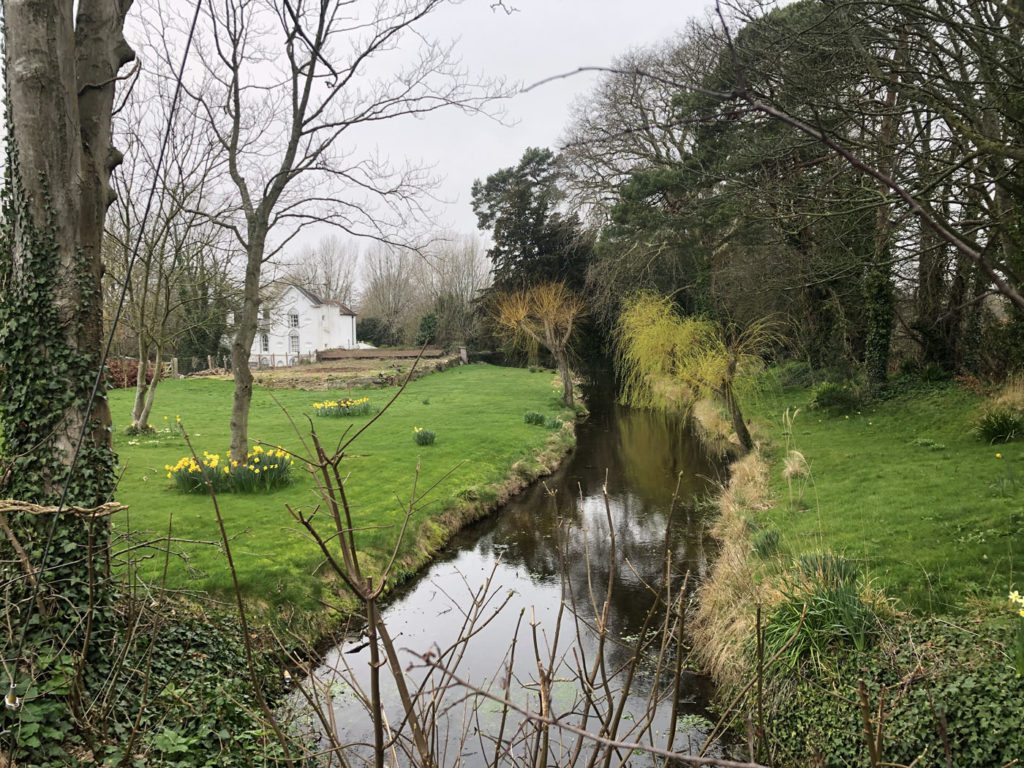


Leaving the Church, we crossed the road and followed the footpath alongside the river Ems which flows into the sea at Emsworth, a town with many attractive Georgian buildings. During the Middle Ages it was a busy port importing wine, and using tidal power to grind the grain into flour. The oyster beds were an important business, as was ship building. It was high tide and a large number of swans were swimming close to the shore. As we approached, several came ashore to check us out! Our “seaside” walk continued along the pleasant walkway separating the estuary from the mill pond, then made our way to the main road and the bus to Chichester, our next destination.
A light drizzle was falling as we admired the Spring flowers in the very attractive Bishop’s Palace Gardens which date back to 1147. Had it been a dry day we would have sat on the many conveniently placed seats to eat our picnic lunch. A great shame as so close to the bustling city centre, the gardens are a tranquil place to sit and relax, soaking up the peace that prevails there. Reaching the Cathedral, we joined other visitors sitting in the Cloisters, also eating packed lunches.
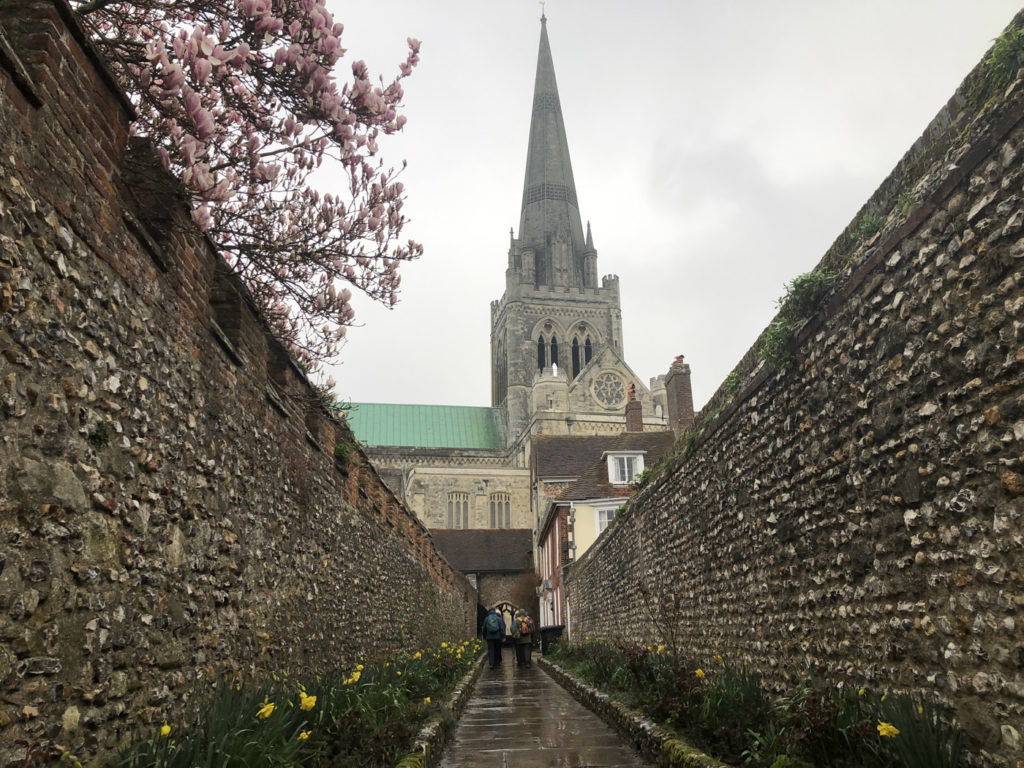



Walk through and lunch in the Cathedral Cloisters
Time to move on and into East Street, past the elaborate Market Cross. This is a grade One listed building constructed between 1477 and 1503 was the traditional place for the inhabitants of Chichester to buy and sell their wares. Reaching the end of East Street, we turned left and up onto the walkway along the City Wall. Here we obtained a good view of what used to be the meat and fish paste factory. The Shippams family started production in 1786 moving to various sites within the city. This factory was completed in 1913 but closed in the 1990’s. As we continued walking along the North East section of the city wall with the grass slope down to the road below, we saw an attractive mosaic of flowers including primroses, fritillaria and a solitary early cowslip. We continued on around Priory Park and looked across at the Guildhall, an example of late 13th Century architecture. Even on a dreary day it made a grade picture with the distant Cathedral towering above. Nearby in the park during an archaeological survey in 2017 two Roman town houses were discovered.




Leaving the County town of West Sussex behind, we boarded the Midhurst bus. Had it not been for the relentless drizzle and gloom we would have enjoyed another scenic drive, roughly following the course of the river Lavant. Often a dry river bed, but following heavy winter rains, springs rise to the surface and water once again flows, following its ancient course through Chichester and onwards to the sea. Having passed West Dean with its famous walled kitchen garden containing many original Victorian glasshouses, we glimpsed through the trees some of the historic buildings rebuilt in the Weald and Downland Museum at Singleton.
For our final short walk we left the bus on the outskirts of Midhurst and paused for a while at South Pond, constructed originally to supply fresh fish to a nearby 12th Century manor house. The usual Mallards and Canada Geese eyed us suspiciously, or was it expectantly? Perhaps hoping for some food. I was pleased to see the pair of Egyptian Geese still with their youngsters that I had spotted a few weeks earlier when they had only just hatched. Once such tiny balls of downy feathers and very vulnerable, but now looking like a smaller version of their parents. Saying “Goodbye” to them we crossed the road to The Wharf, once a busy place where the canal boats terminated many years ago on their journeys via the rivers Rother and Arun to reach the Wey and Arun Canal. Following the footpath alongside the Rother we reached the ruins of Cowdray House then turned to join the ancient driveway that led us to the Midhurst bus stand.
Our fourth and final bus ride of the day took us via Stedham and Rogate. arriving mid-afternoon back in Petersfield. We were of course wearing our waterproofs and Goretex lined boots. This proved that walking in the rain can make for an enjoyable day provided everyone is correctly dressed for the occasion.
Author: Gordon Churchill
Photos: Linda & Paul Farley

